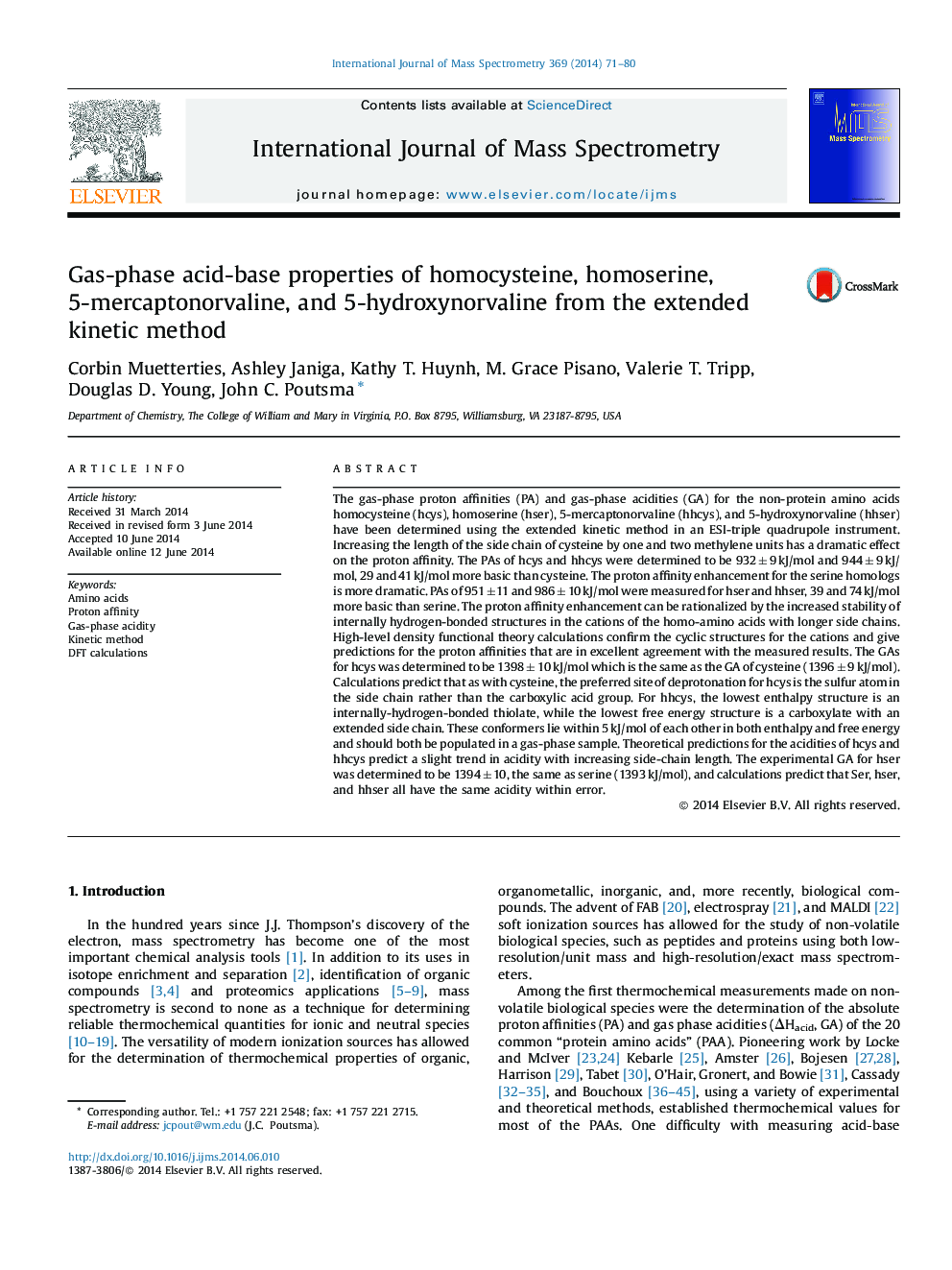| کد مقاله | کد نشریه | سال انتشار | مقاله انگلیسی | نسخه تمام متن |
|---|---|---|---|---|
| 1193100 | 1492259 | 2014 | 10 صفحه PDF | دانلود رایگان |
• We obtained proton affinity (PA) and ΔHacid (GA) for cysteine and serine homologs.
• We used the extended kinetic method and density functional theory calculations.
• PAs are highly-dependent on side-chain length, GAs are less so.
• Our work is put into context within the historical developments of PA and acidity measurements of amino acids.
• Homocysteine adopts a thiolate structure when deprotonated.
The gas-phase proton affinities (PA) and gas-phase acidities (GA) for the non-protein amino acids homocysteine (hcys), homoserine (hser), 5-mercaptonorvaline (hhcys), and 5-hydroxynorvaline (hhser) have been determined using the extended kinetic method in an ESI-triple quadrupole instrument. Increasing the length of the side chain of cysteine by one and two methylene units has a dramatic effect on the proton affinity. The PAs of hcys and hhcys were determined to be 932 ± 9 kJ/mol and 944 ± 9 kJ/mol, 29 and 41 kJ/mol more basic than cysteine. The proton affinity enhancement for the serine homologs is more dramatic. PAs of 951 ± 11 and 986 ± 10 kJ/mol were measured for hser and hhser, 39 and 74 kJ/mol more basic than serine. The proton affinity enhancement can be rationalized by the increased stability of internally hydrogen-bonded structures in the cations of the homo-amino acids with longer side chains. High-level density functional theory calculations confirm the cyclic structures for the cations and give predictions for the proton affinities that are in excellent agreement with the measured results. The GAs for hcys was determined to be 1398 ± 10 kJ/mol which is the same as the GA of cysteine (1396 ± 9 kJ/mol). Calculations predict that as with cysteine, the preferred site of deprotonation for hcys is the sulfur atom in the side chain rather than the carboxylic acid group. For hhcys, the lowest enthalpy structure is an internally-hydrogen-bonded thiolate, while the lowest free energy structure is a carboxylate with an extended side chain. These conformers lie within 5 kJ/mol of each other in both enthalpy and free energy and should both be populated in a gas-phase sample. Theoretical predictions for the acidities of hcys and hhcys predict a slight trend in acidity with increasing side-chain length. The experimental GA for hser was determined to be 1394 ± 10, the same as serine (1393 kJ/mol), and calculations predict that Ser, hser, and hhser all have the same acidity within error.
Figure optionsDownload high-quality image (136 K)Download as PowerPoint slide
Journal: International Journal of Mass Spectrometry - Volume 369, 15 August 2014, Pages 71–80
